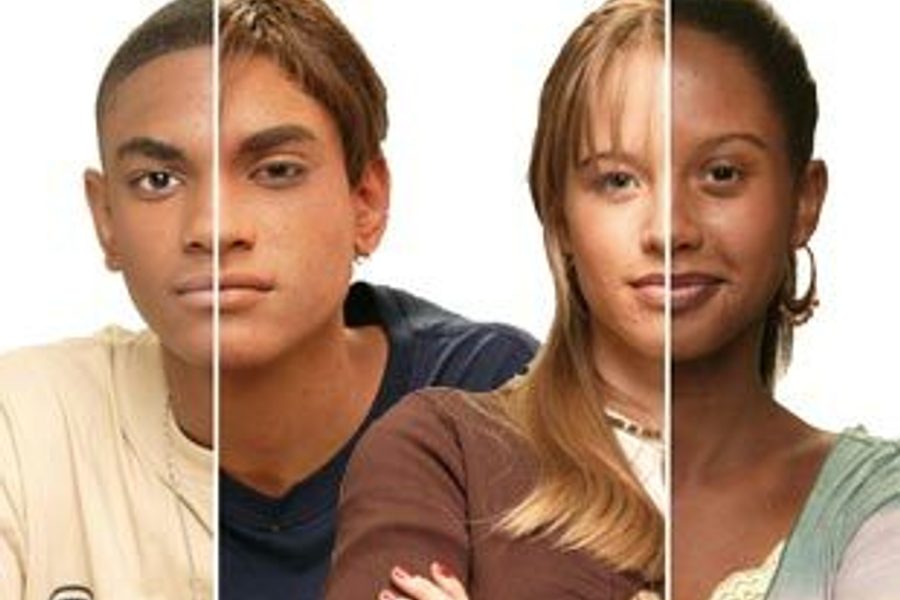
The day after the 2006 Oscars, Los Angeles Times critic Kenneth Turan penned a scathing critique of the academy’s choice of best film, Crash, which he described as “a feel-good film about racism.” The film, he wrote, “could make you believe that you had done your moral duty and examined your soul when in fact you were just getting your buttons pushed and your preconceptions reconfirmed.”
But that is an accurate description of almost every major Hollywood movie that deals with race; they are designed to appease the white-centric biases of studio executives and the mainstream audience they entertain.
Like its predecessors, Crash offers up a self-serving thesis of race that consists of two propositions: One, racism is a matter of individual prejudice; two, the antidote to racism is, therefore, personal redemption. In other words, we – not just whites but also blacks, Asians, Arabs, etc. – are equally guilty of racism, and we each need to move past our bigotry to recognize the common humanity that binds us all. At the heart of this individualist perspective on race is the assertion of sameness: We are all racists; we are all human. Difference is an artificial cultural construct that disguises and distorts our true universal essence.
As various critics have pointed out over and over again, this kind of liberal humanism effectively lets white Americans off the hook and denies the need for radical social change. The failure of movies like Crash to articulate racial inequality, however, points to the more difficult challenge of talking about race, period. We do not know how to see the other as both different and equal, or how to recognize difference without resorting to essentialism. It’s one of the reasons why progressives are more comfortable talking about race in terms of how people are treated than who they are. And that means we end up defining racial identity entirely in terms of power relations: for example, whiteness equals privilege.
Many leading scholars on race have repeatedly argued against the liberal tendency to treat race – and therefore racial difference – as a social problem. They instead draw attention to the performative aspect of race, wherein racial identity is not a fixed unchanging essence but a set of mutable and contingent cultural behaviors. As Sarah Susannah Willie writes in her book Acting Black, “By treating race as acquired, like a skill or a behavior, we can begin to see it as something over which individuals have differing degrees of control and varying options for agency, as an aspect of identity that is at least partly performed, continuous, and contingent.”
As a woman of color, I find that theorizing race as a performance offers several benefits. One, it helps us recognize the fact that we all “act” our racial and ethnic identities, be it black, white, Chinese, Native American or, in my case, Indian. Two, it also reveals how people of color are forced to perform their identities in particular ways to meet the requirements of a racist culture – and in doing so, points to the way that racism shapes the most intimate parts of our selves.
Acting black, white
One of the most compelling examples of race-as-performance is currently playing itself out on television. The FX reality show “Black. White.” physically transforms an African-American and Caucasian family to look like the other race, and follows them around as they interact with the world in racially charged situations. On the surface, “Black. White.” offers a fairly standard view of racism as discrimination – i.e., how people are treated because of how they look. According to its producers, the aim of the show is to ask: “What is it like to live in someone else’s skin?” But “Black. White.” – intentionally or not – also raises a far more important question: What does it mean to “act” black or white?
The answer is revealed early in the series, when the two families gather to exchange tips about behavior that will help each other “pass.” For Carmen Wurgel, a white location scout in Santa Monica, the conversation reveals a “secret society with shared experiences and language and customs.” But when it’s their turn to solicit advice, the African-American Sparks family politely declines. “I already know how to adapt and get along with white people. … Black culture has to conform to white society,” says Brian, a contractor from Atlanta. Acting “white” is not an option, but an essential survival skill for any person of color in America.
Author Kenji Yoshino calls this behavior “covering,” which is also the title of his recent book exposing the shortcomings of civil rights legislation. He defines covering in the context of race as the pressure to “act white” by eliminating or playing down non-white aspects of one’s identity along four axes: appearance (Don’t wear a sari, turban, veil, corn-rows.); affiliation (Speak excellent, unaccented English.); activism (Avoid ethnic or race-based organizations.); and association (Cultivate predominantly white social networks.) Yoshino argues that people of color – consciously or otherwise – perform this whiter version of their identity to satisfy an unspoken “social contract, in which racial minorities are told we will be rewarded for assimilating to white norms.”
Acting white not only determines how you are rewarded, but also acts as a marker of what you deserve. It’s why African Americans, as comedian David Chappelle observed in a recent television interview, are “bilingual,” adept at eliminating “black-associated” patterns of speech in a job interview or at the workplace. “When I am sitting at the table [in Hollywood], I want that white guy to know that my parents are better-educated than he is,” said Chappelle. Speaking white is speaking privilege.
Yoshino, however, brushes past the fact that the ability to “cover” is in itself a class marker within communities of color. It is only the relatively affluent who have the opportunity to learn the skills of acting white. A Latino housemaid or an Indian taxi-driver has no such option. Their inability to “cover” instead becomes the grist for cruel ethnic jokes that their better-disguised brothers and sisters are required to laugh at to prove their “whiteness.”
At first glance, “covering” seems only about negating non-white norms of behavior. But at the heart of this imperative to “act white” lies a deeply racist and essentialist view of people of color. Yoshino points to Lawrence Mungin, a high-powered Harvard-educated attorney who spent his entire life “negating every possible stereotype about African-Americans in his behavior” because, in his words, “I wanted to show that I was like white people: ‘Don’t be afraid. I’m one of the good blacks.’ ” But as Yoshino notes, “In so carefully reversing every term of the racial stereotype, Mungin was defined by it as surely as a photograph is defined by its negative.”
Covering, however, doesn’t mention the ironic antithesis to Mungin represented by rap stars like 50 Cent, who assiduously perform every negative black stereotype in order to satisfy the fantasies of a white, middle-class audience, who then characterize such behavior as authentically “black.” And so when a naive and clueless Carmen Wurgel – who self-confessedly hasn’t “been around a lot of black people” – tries to “talk black,” she makes the mistake of playfully saying “Yo, bitch!” to her African-American counterpart, Renee Sparks.
Sadder still is when some people of color internalize this racist connection between performance and identity. In 1999, when psychologist Angela Neal-Barnett asked focus-group students to define “white” behavior, their list included enrolling in Advanced Placement or honors classes. It exemplified what Barack Obama described in his Democratic National Convention speech as “the slander that says a black youth with a book is acting white.” This isn’t to say that anti-intellectualism is the sole preserve of African Americans, but to acknowledge that people of color are under pressure to perform different versions of their identity for different audiences, which includes acting more “authentic” to avoid being tagged variously as a “Banana,” “Coconut,” or “Oreo” by members of their own community.
Uncovering racism
Speaking of race-as-performance entails its own hazards. In “Black. White.,” Rose Wurgel, Bruno’s smart and sensitive 18-year old daughter, is repulsed by what she calls the “language of stereotype” that becomes inevitable in conversations about “acting” black or white. “I don’t want to be putting out this bullshit,” she says. In his book, Yoshino describes being challenged by a female colleague who levels a similar charge:
But the covering idea could perpetuate the stereotypes that you want to eliminate. One way minorities break stereotypes is by acting against them. If every time they do so, people assume they are ‘covering’ some essential stereotypical identity, the stereotypes will never go away.
Yoshino’s answer is to express his “commitment to autonomy as a means of achieving authenticity,” but does not explain what he means by an “authentic” self. But when understood in the context of the race-as-performance thesis, however, his critique suggests that we should each be free to “act” our race according to our own needs and desires – rather than to confirm or subvert social expectations. And so Brian’s 17-year-old son, Nick, could become a mathematician who speaks unaccented English, wears his hair in corn-rows, and enjoys playing golf with his African-American wife – and be entirely, authentically “black.”
The freedom to perform our identity gives us the power to define its meaning. But that freedom cannot be achieved by simply changing individual behavior or attitudes, which are merely symptoms of a greater social disease that afflicts our culture, its traditions and structures. Resisting this institutional pressure to perform distorted versions of ourselves has to be a collective struggle waged in courtrooms, schools, workplaces and in the media. It is only then that we can be both equal and different, together.








